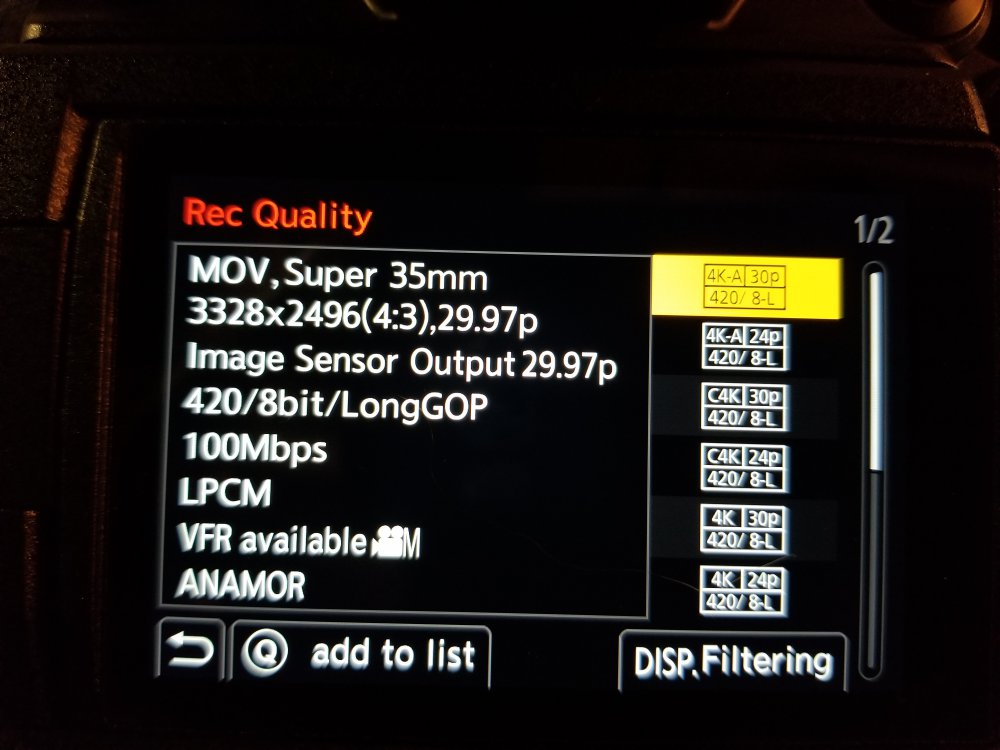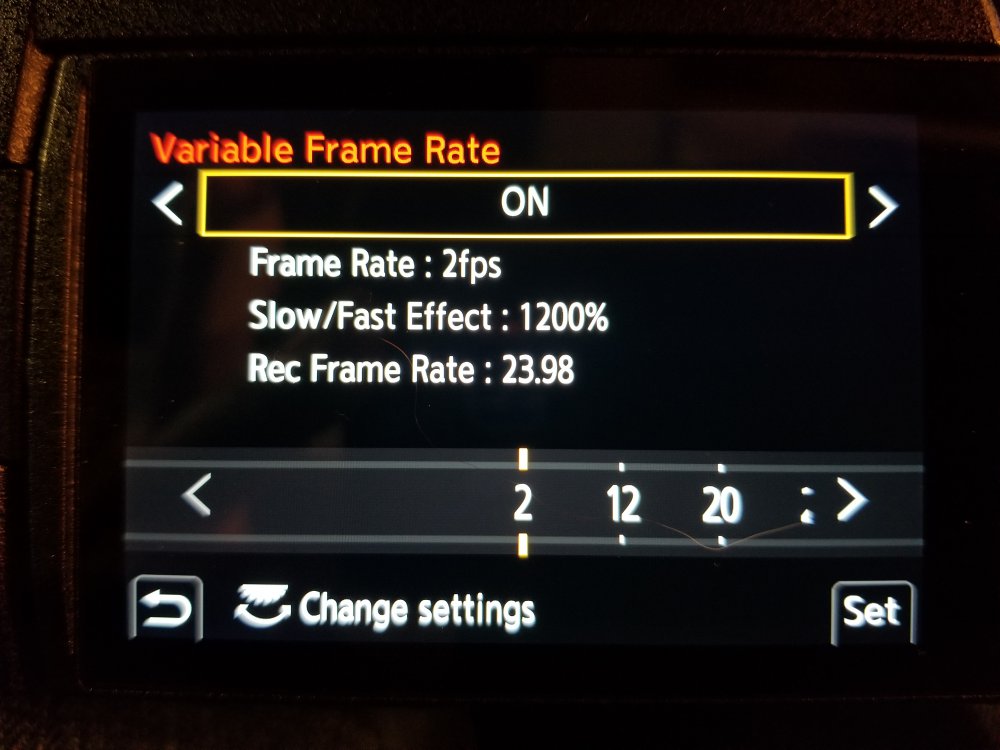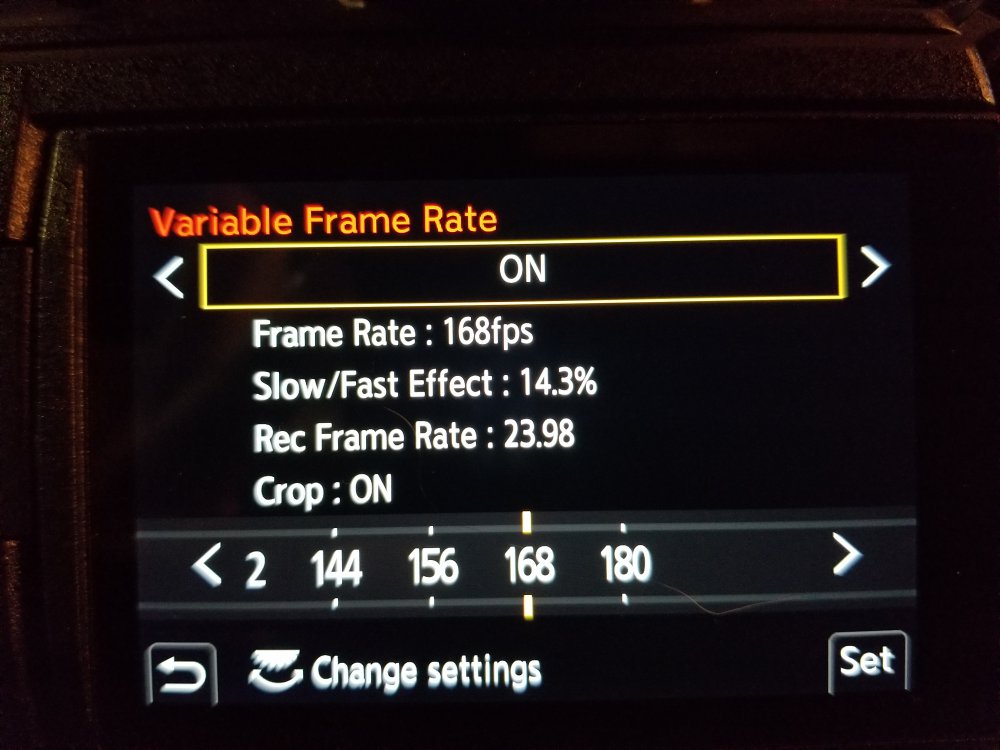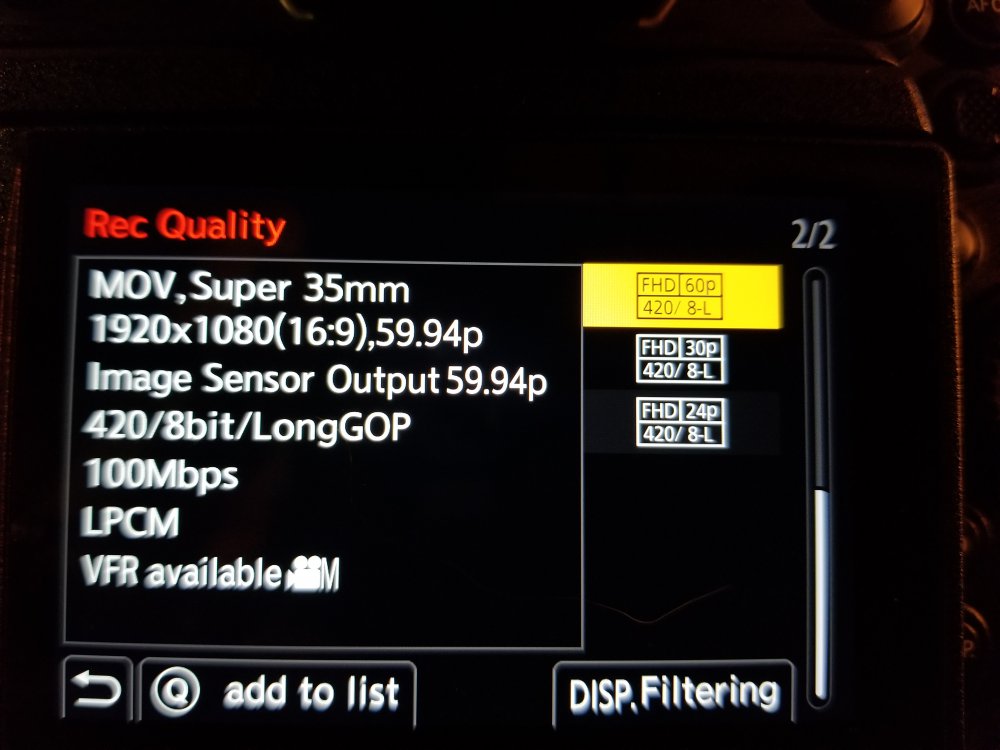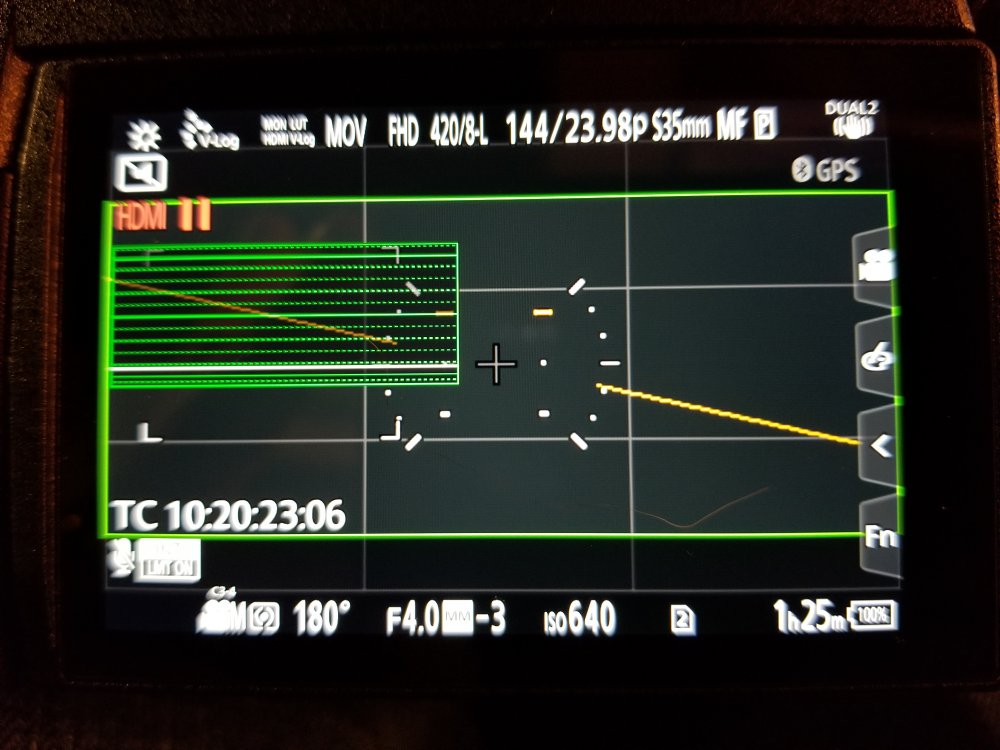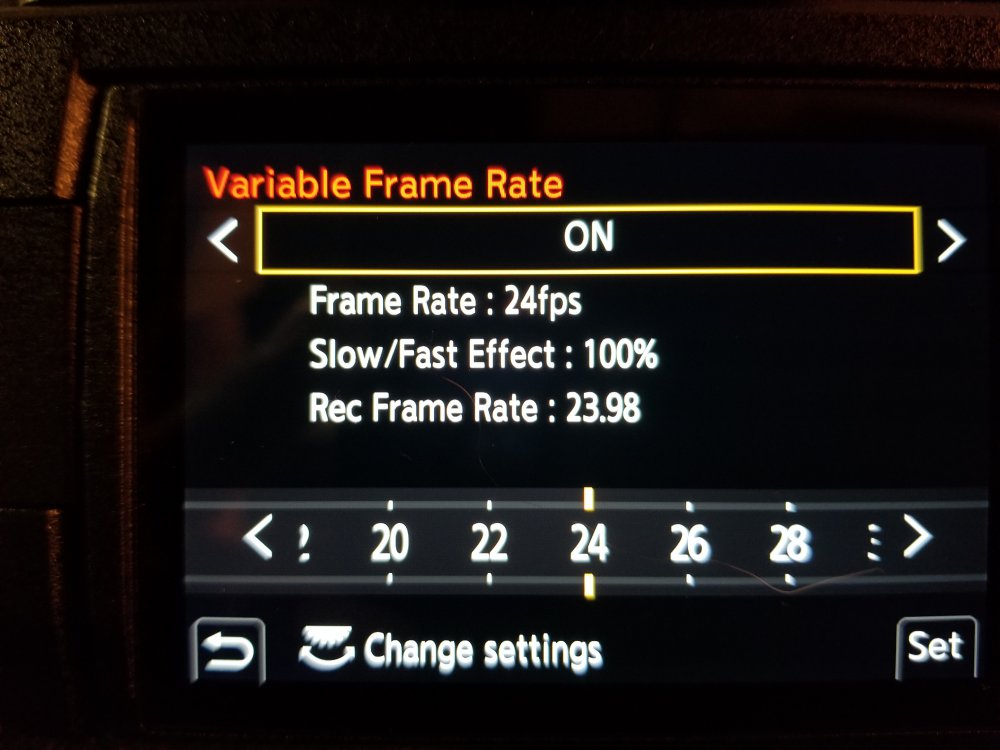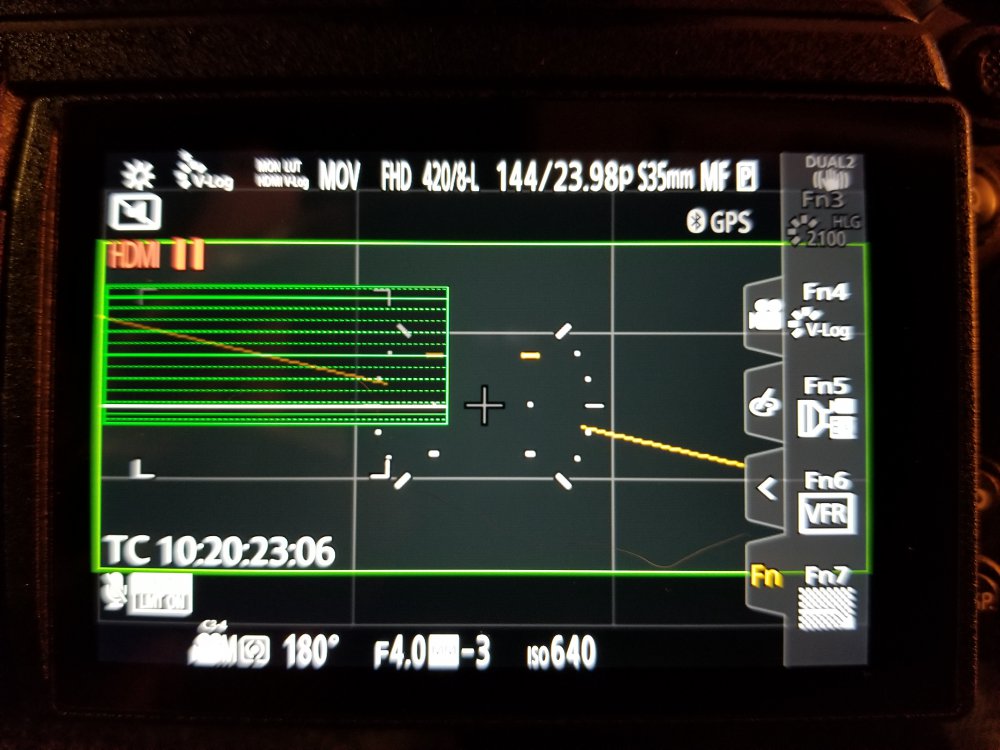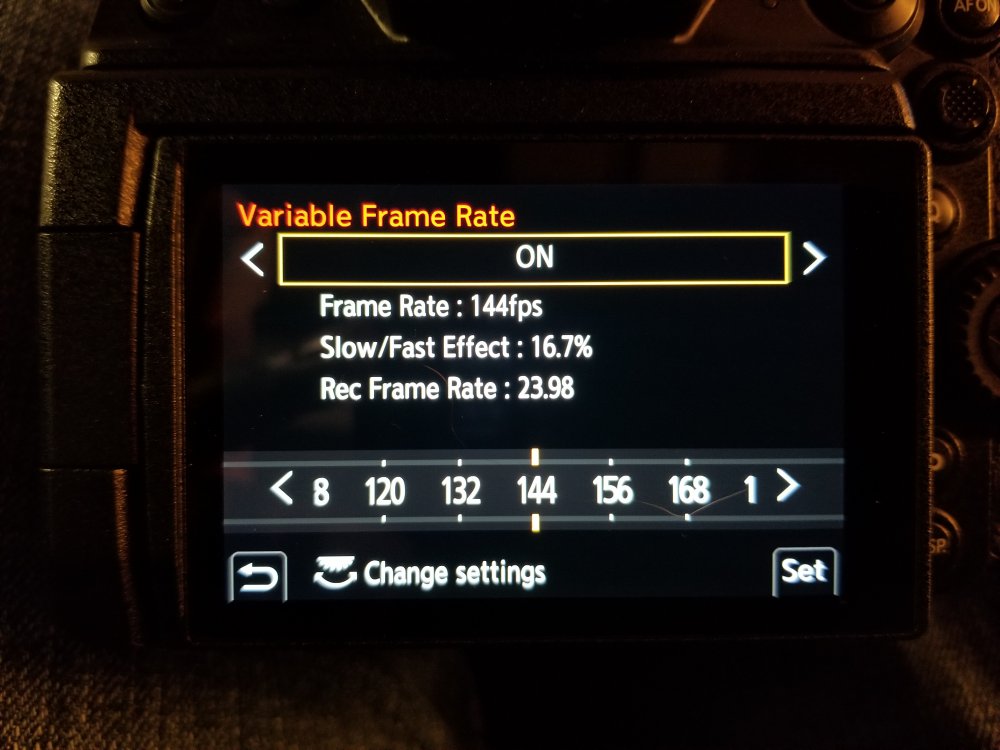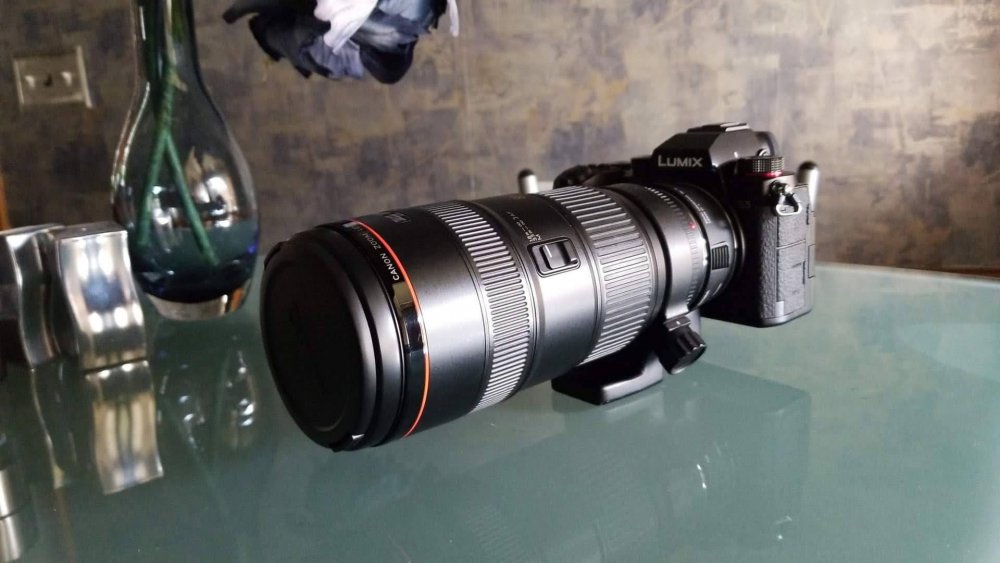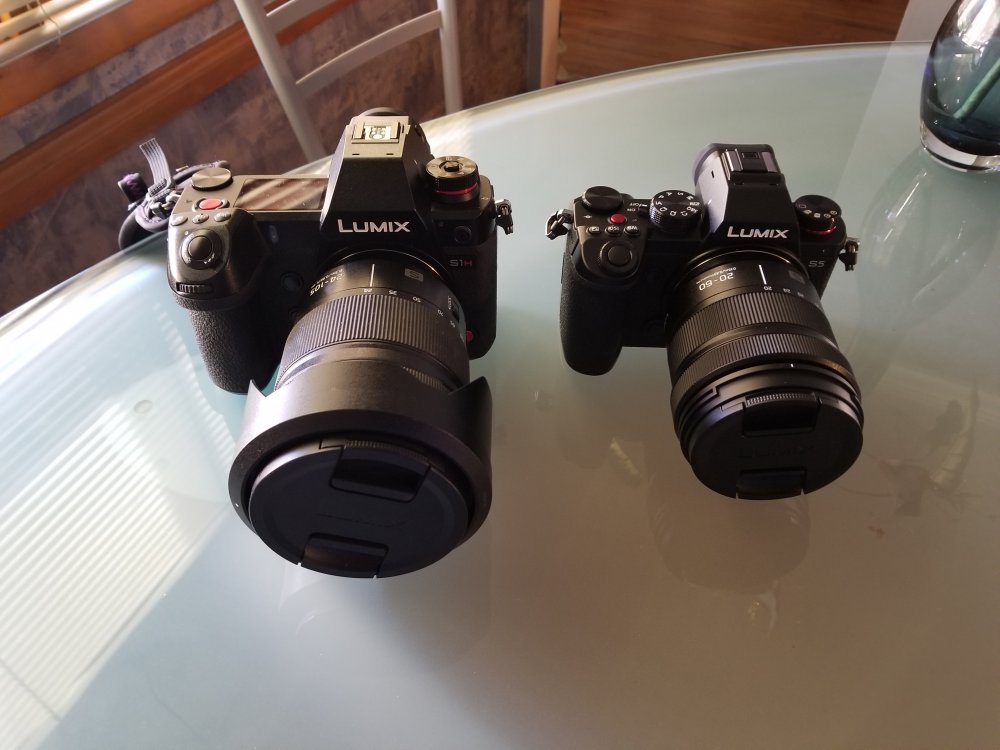Leaderboard
Popular Content
Showing content with the highest reputation on 10/08/2020 in all areas
-
Z6 II and Z7 II mirrorless cameras
Simon Young and one other reacted to Danyyyel for a topic
Personally I hope they stick to h264, h265 is a nightmare to edit. They should add higher bit-rate also, same as we have different jpeg setting. High bitrate 10 bit h264 would be a dream for 90+of jobs. When I see what you can already do with their 140 mbit codec, it would be both practical and lighter weight.2 points -
The Panasonic DC-BGH1 camera soon to be announced
UncleBobsPhotography and one other reacted to Sharathc47 for a topic
https://www.43rumors.com/ft5-leaked-lumix-bgh1-camcorder-specs/2 points -
Sony A7S III
Juank and one other reacted to Llaasseerr for a topic
I already mentioned this in another thread, but without checking myself in Premiere, I believe it's just importing the raw as gamma 1.0 whereas when you are monitoring on the Ninja V, it's converting it to Slog3. Unless you are working in Resolve, Nuke or Scratch then you need to transform from raw to log to be able to use the footage correctly in Premiere because it doesn't have a robust colour management pipeline that allows for wide gamut or floating point images.2 points -
Need some help with wireless microphone system
aaa123jc and one other reacted to KnightsFan for a topic
I don't have super extensive experience with wireless systems. I've used Sennheiser G3's and Sony UWP's on student films, and they've always been perfectly reliable. The most annoying part is that half of film students don't know that you have to gain stage the transmitter... Earlier this year I bought a Deity Connect system, couldn't transmit a signal 2 feet and I RMA'd it as defective. Real shame as they get great reviews and are a great price. What I can say is their build quality, design, and included accessories are phenomenal. I very nearly just bought another set, but my project needs changed and I got a pair of Rode Wireless Go's instead. I've been quite happy with the Go's for the specific use case being in a single studio room. For this project, having 0 wires is very beneficial--we're clipping the transmitters to people and using the builtin mics--so they are great in that sense. If your use case is short range and you aren't worried about missing the locking connector, you can save a lot of money with them. I will say I wouldn't trust them for "normal" films as the non-locking connector is a non-starter no matter the battery life and range. Though I think they will still be useful as plant mics, they are absolutely tiny!2 points -
Panasonic S5 User Experience
ntblowz and one other reacted to herein2020 for a topic
I shot some quick test footage today just to test my workflow from end to end prior to a paying project. The S5 is so easy to grade, I haven't even read the official how to on properly exposing VLOG and I'm using a VLOG to Rec709 LUT that I don't even know where it came from so I'm sure I'm doing it all wrong. Also I really wanted to test lowlight and the dual gain ISO so I shot some night footage. Everything is hand held, I stuck to 29.97 to test the IBIS, also I was using the kit lens so I needed every bit of shutter speed I could get. The picture at 4000 ISO was noisier than I thought it would be considering it has dual ISO. Also, I edited the video on a 1080P timeline then upscaled it to 2K which is how I usually do it so that I can recompose and crop in 4K.2 points -
Panasonic S5 User Experience
majoraxis reacted to herein2020 for a topic
There is an R5/R6 user experience thread so I figured it was safe to start a Panasonic S5 user experience thread. I've only shot with it for a few hours, mostly setting up (and learning) the menus and I know there are already endless YouTube reviews, but I thought I'd share my thoughts on my experience so far; completely unbiased, unsponsored and as someone who will use this camera for everything from music videos to weddings and if all goes well I might even use it for photo shoots. Since there is so much that I like about this camera I've decided to just put my dislikes first because it is such a short list. The Grip - This is my biggest dislike. holding the camera is so uncomfortable. The grip is really shallow and the strap mount sticks out and digs into your hand when you are holding it in a landscape configuration. Not so much a problem with video for me since I use the back display, but using the viewfinder for images is very uncomfortable. I'm going to try getting a dual battery grip to see if that improves it. The R6 by comparison feels like it was custom molded for my hands. The Lens Mount - I knew this going into it, but there are so few native Panasonic lenses for this camera that I will have to use an adapter which I hate doing. I know more lenses are coming but they are very expensive and everything I've read says the Sigma versions focus very slowly. I would love a Voigtlander fully manual 35mm lens for gimbal work like I have for the GH5. I have no idea yet what I will do for photography or if I will ever trust this camera for paid photo shoots. The Battery - I don't understand the battery at all. It fits the GH5 and has contacts for the GH5 yet for the S5 the contacts are on the other side? Why didn't they do what Canon did and simply make a higher capacity battery with the same contacts? Not only are spare batteries impossible to find right now, this means all of my GH5 batteries won't work in this camera....so annoying. Ok, short list over now lets get to the stuff I care about that made me realize this was truly the camera for me. I first ordered the R6 and returned it (horrible user experience for my needs) so I am going to kind of compare my experience with the S5 to the R6 since they probably kind of are targeted to the same buyer and since it is hard to ignore the Canon hype machine even when you know about the R6's overheating issues. No Overheating - Ok we all know that but I had to put it out there anyway. This was the number one reason I returned the R6. The S5 on the other hand shoots glorious 4K until the card fills up (some limitations of course for 10 bit and 60FPS but it does have unlimited modes). Even if the R6 didn't overheat you would still hit that 30min limit and every single 4K mode overheated. Dual Slot Video Recording - The S5 gives me every option I could want and even a few I don't care about. The R6 will only record to a single slot. Electronic Level Meter - The S5 has it....of course, and it actually stays on while recording video. For some crazy reason the R6 disables the electronic level from showing on screen while recording video. XLR Audio Module - As annoyed as I am at Panasonic for the battery situation, the XLR module from the GH5 works with the S5 so all is almost forgiven. The R6 of course has nothing for XLR. I tested the module today, the S5 recognized it instantly and the audio was perfect. Free VLOG - Ok "Free" is a very generous term, but it does not cost extra. And this is real VLOG not some flavor that just flattens the profile, unlike the R6 which currently ships with CLOG. Canon said CLOG3 was coming in the future, but who knows if it will actually include the R6 or when "the future" really is. Body Quality - The S5 actually feels slightly lower quality than the body of the GH5, but that could be because it is lighter and smaller. Regardless, the quality feels way better than the R6. Sync/Desync Photo/Video Settings - It took me a long time to find, but it is possible to separate the photo and video settings and you even get to pick which ones stay synced with the other. When running and gunning you want shutter angle, VLOG, etc for video and shutter speed, Natural profile, etc for photos. You can set it so that they are completely separate, not all cameras let you do that and even the R6 did not let me pick which settings to keep in sync (i.e. keep just ISO the same between the two). Dial Position - It is great to have the video mode and Manual photo mode side by side on the dial. The R6 had them at literally opposite ends of the dial....very annoying. Dedicated Buttons - There is a dedicated ISO button and a AF/MF switch on the lens. The R6 had neither. I use the AF / MF lens switch all the time, its the fastest way to be 100% certain all of the AF stuff is off, especially if you are switching between photos and video. Video Footage - The footage out of the camera so far to me in with my very limited testing is incredible, I didn't think Panasonic had it in them. The colors are perfect to my eyes, the codecs are super easy to play back in VLC and actually easier to edit in Davinci Resolve than the GH5's footage. Both 4K60FPS and 4K30FPS play smoothly even after color grading. So far the footage grades as easily as the R6 footage with the added benefits of not needing proxies. Codecs - You get to pick H.264 or H.265 and still get to shoot in VLOG and 4:2:2 10bit. For some crazy reason Canon with the R6 forces you to shoot in H.265 if you want to use CLOG. I will happily sacrifice a little storage space to never have to try to edit H.265 again. Manual Focus Features - I hated the focus rings on the Panasonic MFT lenses, they were non linear which made manual focusing nearly impossible. I ended up getting manual Voigtlander lenses instead. Panasonic has fixed that big time; not only can you now pick linear you can even pick how many degrees to go from stop to stop. I think the R6 let me pick linear but not the focus throw. I do miss Canon's 3 little triangles when manually focusing, to me that's still the best MF guide in the industry. On my S5, focus peaking doesn't seem to work; its on but I can't see it so I have to play with that some more. Timelapse Photography - Ok I had to throw this one in there. Maybe other cameras have this, but this is literally the first camera I have ever owned that lets you do a time lapse in body without an intervalometer AND that lets you take more than 99 images. That's always been a pet peeve of mine for most cameras. Wireless Flash Control - Another pet peeve of mine answered by Panasonic, it can wirelessly control up to 4 flashes without needing an additional transmitter. Of course I'll never use this feature since I already have a complete flash system, but for someone starting out this means even less gear to lug around and to buy. Big Red Recording Box - Who hasn't thought they were recording when they weren't? I turned on the big red box right away (as soon as I found it). This is great, and will definitely help in the future. The R6 of course didn't have this. LVF Button - I didn't understand how important this was until I shot with the R6. It was so annoying in the R6 to have to pick view finder or back screen display. If you picked view finder you had to go into the view finder and navigate back to the setting to change it back. If you picked auto, the screen kept shutting off on me when the camera got to close to my hand or body. Maybe you could map a custom button but I like leaving all of them at their defaults. For the S5 if you want to turn off the viewfinder sensor just press the LVF button...switch to just the VF press it again, switch to auto press it again. So easy to disable/enable one or the other. Auto mode is terrible, switches off the screen all the time if anything gets near the sensor. Here is my neutral list, either I don't really have an opinion yet either way, or I haven't tested the camera enough to feel good or bad about it. Photography Capabilities - I'm still kind of neutral on the photography department. All I have is the kit lens and didn't have time to try the photography part. If it comes even close to the R6's photo performance that will be good enough for me. My Sigma adapter gets here Friday so I will be able to test it with my Canon lenses. Auto Focus - I never used it in the GH5 but this time around it is different because I want to try the photography features as well. In my brief testing, the AF worked fine for photography. It still has the hybrid AF option where you half press the shutter button for the initial focus then can fine tune it using the focus ring so that's good enough for me for video. Menu System - It is improved a bit over the GH5 but still nowhere near as intuitive to me as Canon's menus. I think once I set up my Favorites menu it will be fine, but there's so many features I'm having a hard time finding some of them. I never did learn the GH5's menus, I just created a video Favorites list and that's all I use. My 5DIV is a different story. Final Thoughts - This camera makes me wish I was a travel photographer/videographer. It has so many uncompromised features that would be so useful when traveling that you could practically literally bring just this camera, a wireless flash, XLR module, a few lav mics, variable ND filters, a small video light, travel tripod, and shoot just about anything photo or video. I'm already thinking about projects that I want to shoot with this camera vs the R6 where all I could think about was if it would even make it through the shoot.1 point -

What's today's digital version of the Éclair NRP 16mm Film Camera?
tupp reacted to John Matthews for a topic
Found this gem of a YouTube channel called "ADAPT Television History" talk about how things used to be. In this one, they talk about the Éclair NRP 16mm Film Camera. It was one of the first usable portable cameras back in the day for documentary work. My question is what you think is the modern-day digital equivalent of the 16mm Éclair NRP? I'm just curious what you think.1 point -
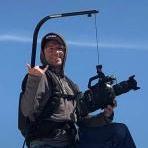
Z6 II and Z7 II mirrorless cameras
Simon Young reacted to Geoff CB for a topic
I own the Z6, I love it but it has usability problems for video. There is significant delay over the external HDMI, and in the viewfinder itself when shooting in 24p and 30p there is bad delay. While these seem like small issues, they are a PITA on actually using it for work.1 point -
I don't feel sorry for my 2 z6 purchase at all, when I bought the first one it didn't have things like eye AF, much better autofocus and even raw video. Sincerely the Z have always been full featured while the Canon where really underwhelming. It's not because Sony and Canon just released there first 10 bit camera than Nikon did not offer that 2 years ago.1 point
-
What's today's digital version of the Éclair NRP 16mm Film Camera?
John Matthews reacted to Anaconda_ for a topic
You're right, sorry about that. I thought's the g2 did. I should have double checked before posting.1 point -
What's today's digital version of the Éclair NRP 16mm Film Camera?
BenEricson reacted to seanzzxx for a topic
There is no Ursa with a dual gain sensor by the way. Also all the people here touting the ML M50 as anything other than an interesting technical achievement (comparing it to an incredible workhorse camera) I just cannot comprehend. If anything I'd say the FS7 is the modem equivalent: super well priced for the time and an all around workhorse camera that is EVERYWHERE (and to be clear, I don't really like the image it produces, I'm just commenting on its position in the field right now).1 point -
What's today's digital version of the Éclair NRP 16mm Film Camera?
John Matthews reacted to Anaconda_ for a topic
I only mentioned it because @tupp did. I'm not up to date with it really, but from what I gather you can shoot up to 5k, and 2.8k is the sweet spot. It's ergonomics are terrible though, and handheld is a nightmare because it's so small and the crop at 2.8k is quite sever - a 5x crop on an aps-c sensor. So the balance and stable image is out the window for documentary style stuff, unless you rig it up and give it some weight. The live view also isn't that reliable just yet. Parts of the frame is missing etc. For the price, it's amazing what it can do, but I would never use mine in any setting other than hobby videos and family clips. Ursa Mini Pro has an anamorphic 3k setting, but I'm not sure if there's a crop on it's 35mm sensor. BMPCC4k has a 2.8k super16 mode, so maybe that's a good option too? Again though, you'd want to add some weight for handheld use.1 point -
I guess I am too suspicious right now to talk about them but I guess David would be softer ; ) if anyhow involved with the brand...1 point
-
I am 100 percent with you here! It was a matter of miscommunication, because you mentioned a small video camera on this thread about a dinky hybrid. I so agree with what you're looking for, especially because Meike has just a great set of cheep cine lenses, both in X-mount and in EF for those like me who have the Metabones speedbooster and can get "that full frame look" on a crop sensor. The only problem, in my case at least, is that if they bring something like this to market in 6-8 months, it will be too late. The fires in the American Pacific Northwest have created a HUGE documentary opportunity. I'm sitting here in the middle of the fires scrambling to put projects together. I've already filmed in the fire zones for more than three days and interviewed residents who were burned out, or partially burned, including a very respected, well known author. I'm negotiating with a producer right now on a multi-year project and I need a C70 cam, if not a C300, asap! If the producer won't directly buy me one but puts enough in the budget to cover my needs, I will likely look to buy a C70 around Black Friday/Cyber Monday if there are good deals. I'm reasonably happy with the image out of my T3 and T4, especially using a Ninja to record ProRes. But having pro specs like VND and included XLR would be so helpful to my filming workflow. And I can't wait to start filming until something better Fuji comes along.1 point
-
I think it depends what you mean by digital equivalent. Ease of use? Price? Ergonomics? Image quality? -- As far as a point and shoot doc camera, I'd say the Ursa Mini Pro g2 is pretty close. With Braw you really can fix everything in post - apart from focus. File sizes are reasonable and you have good audio inputs and with dual ISO, even lighting isn't an issue, other than for artistic effect. Next I'd say FS5/7 and Canon's Cx00 range depending on specific needs. Or if you have the budget, go for Red. Eosm is nice, but not grab and go, plenty of room for error, although the footage will probably have a closer feel.1 point
-

What's today's digital version of the Éclair NRP 16mm Film Camera?
John Matthews reacted to tupp for a topic
I shot with the NPR, and I would say that the EOSM with an ML crop mode and/or the Digital Bolex would be the obvious cameras to compare. I think Aaton (begot from Eclair) had a S16 digital camera worth comparing, and there is also that shoulder mount digital camera with the ergonomic thumb hold of which I can never remember the name.1 point -
I can't see 'it' being the X-S10, but it could be the XH2... The X-S10 then possibly might work as a B or C cam or just a professionals 'personal' camera? But at this price point, it's going to be limited...but what it's limited to may be enough for some.1 point
-

Panasonic S5 User Experience
Mark Romero 2 reacted to Lux Shots for a topic
1 point -

Panasonic S5 User Experience
Vintage Jimothy reacted to MrSMW for a topic
Canon may be pumping out cameras and lenses at an insane rate and will continue to do so. And Sony even more. And Nikon ups their game next week. And Fuji next year and...on and on and on it goes. Simple bottom line is what do YOU need and what has anyone else got to offer that your current set up is not offering? By the sounds of it, you are looking at the cost of an S5 vs the cost the of a C70, albeit switching the roles of your cameras around a bit. Then let's say you get the C70 and S1H became your B cam, you'd tell yourself it would make more sense to swap the S1H for a Canon R6. And change all your glass. What do you NEED? Your needs will be different to mine as they will to the next person and so on, but for this kind of thing, I write a drop down list on the left side of the page in regards to my needs and then simply either put a check mark if I have that need covered or write in the potential options if I have not. Then I ask myself are the potential options actual quantifiable and justifiable needs, or just wants? Such as 4k 60p. Do you actually need it or is 1080 more than good enough? IBIS, need it or are you always on a tripod or gimbal because then it'e worthless. Autofocus. Need or not? 10 billion dot viewfinder when you only use the back of the screen? Sony A7Siii I am looking at you. I don't care what anyone else is doing. My neighbour has a Ferrari. I have a Skoda estate. Good luck sleeping in your Ferrari overnight in the mountains ready for an early morning shoot because I have one of the back seats down, a platform, an air mattress, a 4 season sleeping bag, pillow, plugin coolbox, gas cooker, table, chair... but the Ferrari can do 0-60 in 3.2 seconds which is like 4k raw for an hour or something. Who gives a shit if you don't NEED it. Actually my neighbour has an SUV but for demonstration purposes 😉1 point -

Need some help with wireless microphone system
aaa123jc reacted to fuzzynormal for a topic
The only time I get interference is if I don't do a channel scan. I'm really corporate'y with what I'm using mine for. Rarely stretch the distance on them. When I do they seems to go for about 100 yards or so?1 point -
Yeah, you get to rule the airwaves!1 point
-
So my list is kinda short too. I had the GH5S and I was not really happy with how the video footage intercut with my S1H. It also put me at a massive disadvantage because of the low megapixel count. So I sold off the GH5S with grip, PanaLeica 12-60 f/2.8-4 lens and 5 OEM batteries for a ridiculously low price ($1500) to get me the following things: A worthy companion to my S1H in the video department, in color, resolution, dynamic range and codecs. An equal to the S1H for my ever increasing photo gigs. The first thing that I noticed was how small this thing is! I don't have this as a pro or a con, but in any case, it's a significant departure from the S1H. The next thing that shocked me was the removal of the VFR and HFRmodes that the S1H possess. For all practical purposes, this is now a 60p at best camera with internal conforming functionality. All 1080p modes are now bit limited garbage, and the 10-bit 1080p 120fps will be missed on my S1H. Another thing that it missing is the ability to add codecs to your own custom menu setting. I used this instead of having codec combinations assigned to the C custom buttons, because using those also changed things like aperture, ISO and shutter. Hopefully, this comes back with the firmware update later in the year. I haven't been able to determine if the 0 video noise reduction setting is equivalent to the S1H 0,-1, or some other noise reduction level. That will need more testing. Battery Life is fantastic! I hooked up a cheap USB battery pack rated at 7800 mAH, put in two 128 GB SD-Cards and switched to 4K 8-bit (for unlimited recording) and started the camera and went to sleep. When I woke up the camera was dead, but it recorded over 4 hours of video nonstop and filled up both cards. I'll have to put in two 256 GB secrets to see how much they will record before the camera dies. I was also able to use the extreme power save mode and shoot stills at a wedding for 6 hours. I took almost 900 photos and only lost one bar of battery life. Many are complaining about the EVF not being higher resolution, but I think it's pretty decent. In the included photo, you see the S5 connected to the Canon 80-200 f/2.8 using the Sigma MC-21. I shot a wedding with that alongside the S1H and I manually focused the entire time.1 point
-
Need some help with wireless microphone system
aaa123jc reacted to newfoundmass for a topic
I'm in Vermont, so even our "metro regions" are pretty small. Our biggest city has less than 50,000 people! I live in a town of under 3,000!🤣1 point -
If a gun got pointed at my head and I had to choose a new bag wireless system tomorrow I'd go with Wisycom. But I don't need to do that right now, plus also the wireless game at the pro level is changing so fast I think. Wisycom is only in the lead "for now", Going to keep an eye on what Shure / Audio Ltd / Lectro / etc do. (a pity about the DCR822, indicates it might be a while until we get a Superslot Quad RX from Lectro)1 point
-

The Panasonic DC-BGH1 camera soon to be announced
Mark Romero 2 reacted to IronFilm for a topic
Atalanta is the new major production hub! If someone was to randomly kindly give me a green card, then I'd probably go there myself instead of NYC or LA.1 point -
It is normal for battery life to degrade over the years. Of course if the batteries are rechargeable AA then no problem! But if they're a built in internal battery, you've got a big problem. Where are you that there is no Sony UWP-D21 locally?? Heh, amusingly my Lectro SRa don't have true diversity (antenna diversity but not tuner diversity), yet the Sonys do! Lots and lots of US mixers do complain about G4/G4. Perhaps you're not pushing it hard, only simple sit down IVs? Never used in a metro region?1 point
-
Very popular here are the Wisycom solutions. A few bigger production companies are using them, definitely a couple of tiers up of what we are discussing here, but cheaper than other companies and they usually have some sort of offer going on.1 point
-
Need some help with wireless microphone system
aaa123jc reacted to newfoundmass for a topic
Strange, I've used them a lot on other gigs and have had very few problems but I'm in the US, so I didn't know if maybe you were using ones that use a busy / crowded frequency in your country.1 point -
Greece. G3/G4 technology is just too, 00's..Sony are true diversity for an unbelievably cheap price, and true diversity is what the big boys do.1 point
-
Need some help with wireless microphone system
aaa123jc reacted to newfoundmass for a topic
What country? Could it be a frequency issue?1 point -
The TV series I am being assistant director, are using multiple G3s and we have huge issues with interference. I have stopped using them for almost a decade now, Sony's are the bare minimum for me, and even those I am hearing they have more issues lately.1 point
-

Need some help with wireless microphone system
aaa123jc reacted to fuzzynormal for a topic
So...I've had my Sennheiser G3 trans/receiver for...12 years now? I think that was a good ROI. Just used it again today.1 point -
Need some help with wireless microphone system
aaa123jc reacted to herein2020 for a topic
I have the sennheiser g4's, they are great, I'm not an audio guy but I set them up once and have never touched their settings since then. I put the batteries in them and go. Iv had them work through walls, over a hundred feet away, etc. Iv never had interference or had the audio drop.1 point -
Need some help with wireless microphone system
aaa123jc reacted to newfoundmass for a topic
Indeed. For a lot of people they'll never reach that point, because they're not using them that often but I do think it makes sense to pay a little more for something that'll last you for years and years. After 5 years of heavy use my Azden set, while pretty good, has started to go and they charge $50 each for the transmitter and receiver to replace the batteries. Those Sennheiser kits meanwhile will last until the components give out (so maybe forever?) and take regular batteries, which is great for long gigs. As someone that usually goes for more budget stuff, this is one of those times I wish I'd spent just a little more at the start. Right now I'm using Zoom H1 recorders with cheap Purple Panda lavs until I have more work (Eff you COVID!) and can get a G3 or G4 set. It's just easier and less nerve racking than using my Azden at this point.1 point -
It is crazy that people live in LA and shoot there with how California is going downhill and all the extra regulations around filming. Of course heaps of people want to go to LA as it is Hollywood. But I expect it won't hold that dominant position forever, eventually people will give up on it if LA/Cali keeps on making life too difficult and somewhere else will become the new Mecca to go to. Atlanta Georgia perhaps? Who knows.1 point
-

X-T3 Question: 4:2:2 10-bit versus 4:2:0 10-bit gradeability
KnightsFan reacted to BrunoCH for a topic
There is no difference in "gradeability" between 420 and 422. The big difference about "gradeability" is 10bits vs 8 bits. F-log is better too. ProRes is better than H265 for hardware but it's another question.1 point -
Rode Wireless Go and Blink 500 are only good for short distance, for long distance or have view blocked (like body facing away from camera) a G3/G4 will be much better. So it depend on your distance1 point
-
Even with the GH5 I put a monopod first. I rarely use IBIS. And do not even mention the new fashion of NOT bringing a tripod/monopod because of IBIS, I see a lot of "kids" doing this.1 point
-
The Panasonic DC-BGH1 camera soon to be announced
Mark Romero 2 reacted to newfoundmass for a topic
IBIS is a godsend if you're filming sports, documentary, etc. When I first started out I used big S-VHS and VHS cameras; stabilization was never an issue because of the weight and the cameras were shoulder cams. As cameras got smaller, stabilization became more and more of an issue for my kind of work. I can't just stand still, I have to constantly be on the move. When you're rushing to make sure you get a good shot of the action, you NEED good IBIS otherwise your shot will look awful. If everything you do is on a tripod, gimbal or monopod then that's different, obviously. But if you're doing real run and gun, stripped down handheld video then IBIS is huge. I'd much rather have it than not.1 point -

The Panasonic DC-BGH1 camera soon to be announced
Mark Romero 2 reacted to sanveer for a topic
IBIS and Cinematic Footsge have almost nothing to do with each other. The whackos at top gear used a camera with IBIS and then used it for shots in a car where they probably did terrain that was probably inundated with stones and pebbles and the microjitters sent the camera into a tizzy. I am guessing even OIS lenses must have produced some sort of warped wobble (though way less prominent than IBIS), and the footage needed some stabilization in post, regardless. IMHO all IBIS should have locking mechanisms for the stabilization and the amount of stabilization needs more precise control. In many situations like handholding a shot, especially where you need a tripod equivalent (not all those shots that require a stabilizer for running, or doing pans and tilts etc), IBIS is way better than actually setting up a tripod shot. Tripod shots look super boring. Handheld shorts have a certain cinematic feel, because they feel a lot more engaging and realistic. Tilts and pans and other movements on trolleys and rigs obviously have another level of cinematic feel. But they require quite a lot of time for bei nbf setup. Hybrid cameras have been designed with quick turnaround and more vertalitiy in mind. Reigging is always time consuming. Plus, in all manner of photography (as opposed to videography), IBIS ensures way sharper photos at almost all frame rates, except perhaps 1/125 and higher. For the longest, Olymous cameras offered the equivalent of Google Pixel's Night Shot, merely by letting users push shutter speeds as low as 2-3 seconds (some people claim even longer) that would never be possible for anything that lacked IBIS. IBIS also compensates for lighter cameras. The S5 is lighter and I am guessing that is the biggest reason for the much less effective IBIS on it. @IronFilmthe issue with GH5s is that it is purely a video camera, lacking both IBIS AND a higher MP count, so never succeeded as a hybrid. It obviously has other advantages like better low light, higher dynamic range and faster readout.1 point -

The Panasonic DC-BGH1 camera soon to be announced
Mark Romero 2 reacted to hyalinejim for a topic
Wow, no love for IBIS today? I couldn't go back to a non-IBIS camera. I shoot lots of B roll of people who've never been on camera before and will be gone away in a minute, doing things. IBIS means I can shoot handheld and get three different steady shots from different angles while directing the person(s) in the same amount of time it would take me to get one shot on a tripod. I don't use it as a substitute for a dolly, slider or gimbal. I still remember my horror at the shaky jello of my first handheld shots on the 5D Mk 2!1 point -
I use my GH5s more than the GH5. IBIS is one of those tools that can be overrated in its importance. I found it made me lazy with my shots as I relied too much on it. Its no longer a deal breaker for me in choosing a camera.1 point
-
Until they come up with a 8.5mm high quality tilt shift lens for M43 that will work on a camera in low light at (at least) ISO 25600 with at least 9 stops of DR, yes for me!1 point
-
Man, I've been shooting full frame glass on crop sensor bodies since the 30D (up through the 70D and 80D). Now, between my Metabones and Vizelex nd throttle I can either get that full frame FoV with increased aperture or boost my focal length with VND behind the glass. If the X-H2, when it finally comes out, is closer to a cine Super 35 cine camera than a full frame hybrid, I personally will be in heaven and snatch one right up.1 point
-

Isco-Gottigen KA298 - Help Needed!
pedrambahrami reacted to Tito Ferradans for a topic
Hey enny, He means that, even if the taking lens is at f/2 (aperture), the image with the anamorphic is razor sharp. :)1 point -
Z6 II and Z7 II mirrorless cameras
Sharathc47 reacted to ND64 for a topic
Nikon is not in the list of h265 licensees.0 points



